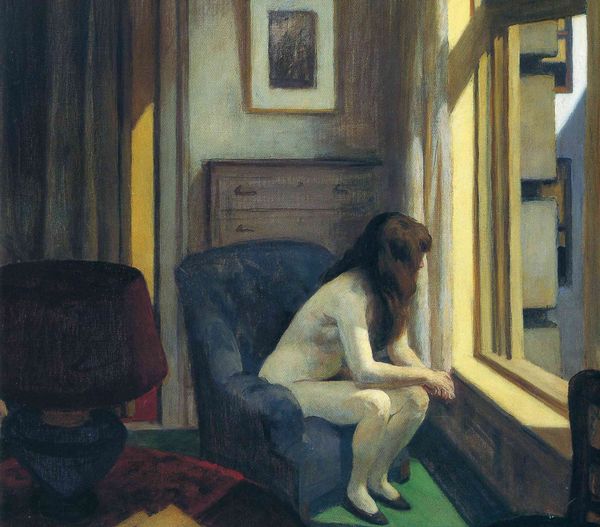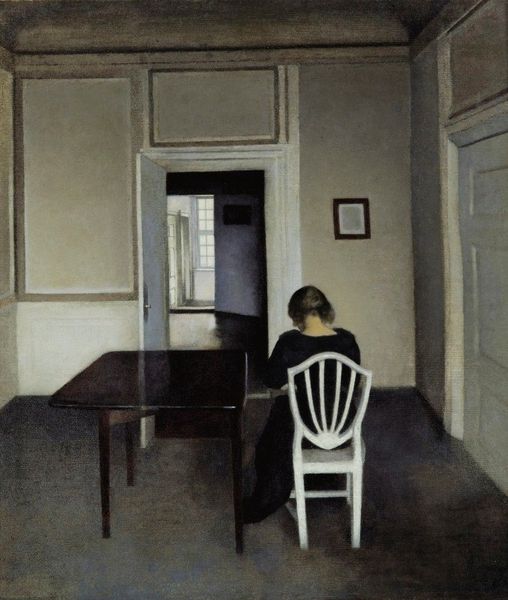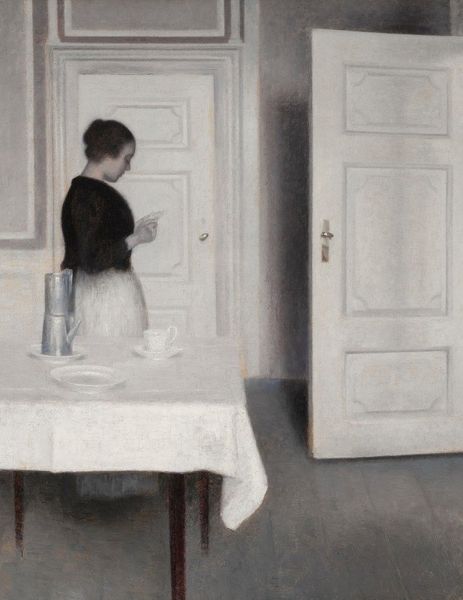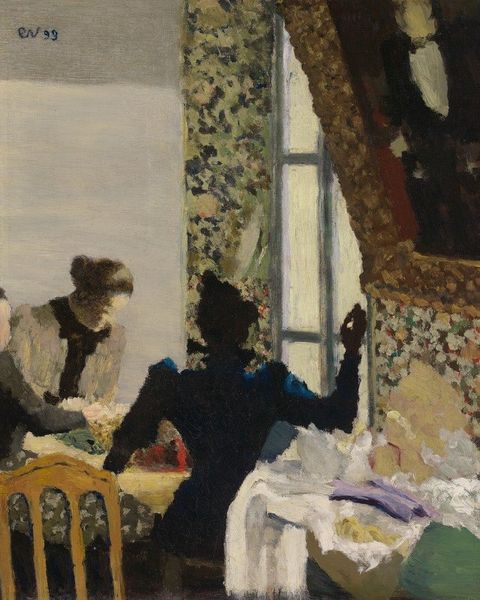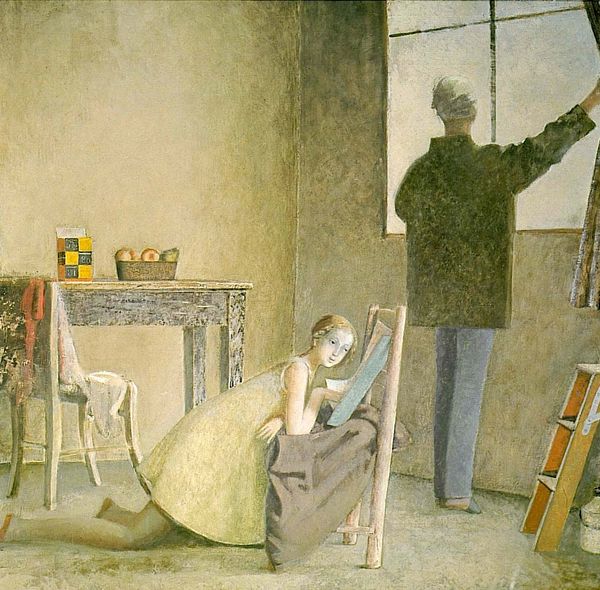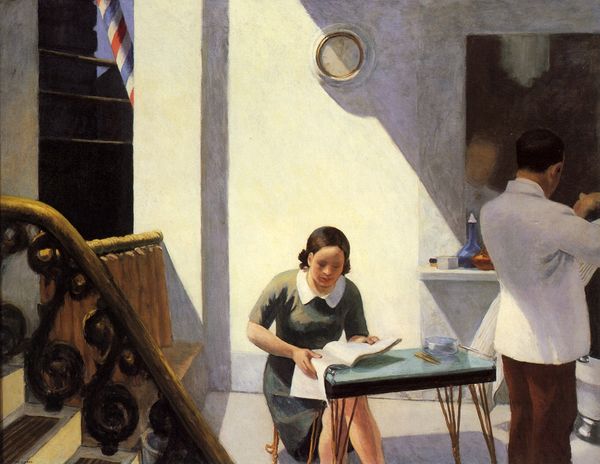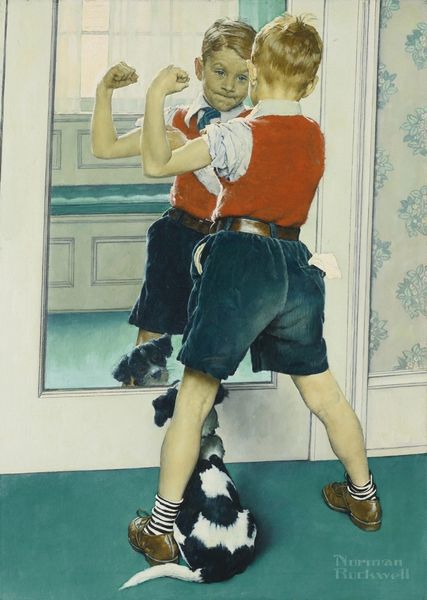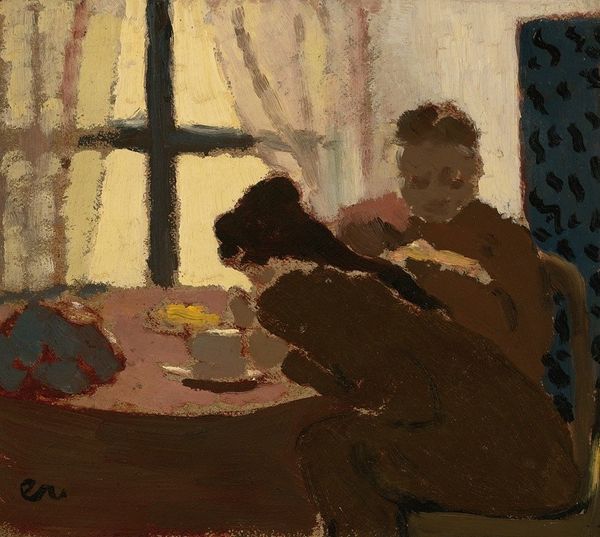
Apartment Houses 1923
0:00
0:00
edwardhopper
Pennsylvania Academy of the Fine Arts, Philadelphia, PA, US
painting, oil-paint
#
painting
#
oil-paint
#
oil painting
#
ashcan-school
#
cityscape
#
genre-painting
#
modernism
#
realism
#
building
Copyright: Public domain US
Editor: This is Edward Hopper's "Apartment Houses," painted in 1923. It's an oil painting. There's such a strong sense of voyeurism, looking into these private worlds. What do you see in this piece, beyond the surface? Curator: Absolutely, it's difficult not to feel like an intruder! For me, Hopper's work always serves as a commentary on the alienation of modern urban life, especially within the Ashcan school context. We have this woman performing domestic labor, visible from the outside. The very composition suggests a disconnect – what does it tell us about the societal roles of women at the time? Editor: So, the painting highlights the visibility, and maybe the devaluation, of domestic labor performed by women in the 1920s? Curator: Precisely. And the stark light doesn’t flatter, does it? It strips away romanticism and forces us to confront a certain harsh reality. Where does this sit in conversations around labor and the female form that persist even today? Do you see any connections? Editor: Well, there is still often an unequal expectation that women should shoulder the burden of caretaking in private and domestic contexts. In our modern political conversation we seem to argue whether it has value, or whether that value should translate into wages. The work makes me uncomfortable because it feels relevant today, even though painted a century ago. Curator: Exactly! It invites reflection. Even though it's about one specific person in a certain moment, it exposes broader inequalities. Art can really galvanize dialogue. What began as a genre painting is also making us face power, labor, gender and the role that race might play as well. It offers so much for conversation. Editor: Definitely given me food for thought! Thank you. Curator: My pleasure, it was a real learning opportunity!
Comments
No comments
Be the first to comment and join the conversation on the ultimate creative platform.
